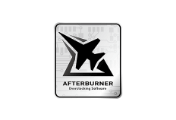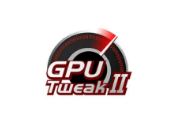MSI Afterburner Review
Overclocking, the ancient art of squeezing out the juice from a graphics card. For too long, it has been shrouded in mystery, with many PC users shying away from it. After all, when a method involves tinkering with power outputs, with a chance to fry something, not everyone is eager to try it. But it’s not so scary or complicated anymore, especially with an app like MSI Afterburner.
In this MSI Afterburner review, we’ll try to demystify overclocking and guide you through all of the capabilities of this beloved PC app. We’ll talk about its compatibility, the latest features that make it more than an overclocking tool, and several alternatives to it.
- OC scanner
- Manual and automatic overclocking
- System monitoring with overlays
- Video and screenshot capture
- Benchmarking tools
- Easy to use
- Completely free
- All-in-one tool
- Not limited to MSI products
- Gameplay capture can be spotty
Overview

MSI Afterburner is, in the eyes of many gamers, a must-have app. Many would go as far as calling it the best gaming PC app due to its incredible versatility. It’s not just mere overclocking software but a fully-fledged tool for controlling many systems of your gaming rig.
That doesn’t mean it’s a complicated app - quite the contrary. MSI’s developers have spent a lot of time streamlining every single feature so everyone can quickly start using Afterburner. Let’s take a close look at each tool in this digital toolbox.
GPU Overclocking
The main reason for installing this app. Overclocking is the bread and butter of MSI Afterburner features, and, logically, it takes up most of the space on the main menu. Four values - GPU’s clock frequency, voltage, memory clock, and GPU temperature limit - can be individually adjusted. You can also set your GPU’s fan speed manually or let the app automatically adjust it according to overclock values.
But how do you know how far you can push that shiny new graphics card before it shuts down, or worse, ends up in flames? The OC Scanner tool is responsible for that. When you run it, MSI Afterburner uses Nvidia’s algorithm for determining the exact model of the GPU chip, its variant, and manufacturer. Then, it finds the highest stable overclock settings that guarantee a performance boost without jeopardizing system stability.
This automated function allows you to then safely tinker with the sliders mentioned above without worrying about GPU overheating or causing any damage to the PC. Of course, back up your system and write down the default values before making any changes, just in case.
System Monitoring
Playing with power means nothing if you can’t keep tabs on your rig. Another crucial part of the MSI Afterburner overclocking utility is the hardware monitor. This screen shows a real-time overview of various systems, including graphics memory usage, clock speed, fan speeds, power consumption, and framerate.
Fans of detailed statistics will love this screen, especially when paired up with the free RivaTuner Statistics Server app for logging all the data. For others, who prefer more immediate information, especially during gaming sessions, an on-screen display is available through the settings menu.
It’s fully customizable, so you can select how detailed the information will be. It only appears in games and other 3D apps, with a hotkey available for quickly turning it off and on.
Benchmarking
So far in our review, we’ve talked about GPU overclocking and analytics. However, this app is also perfectly capable of testing your hardware. Benchmarking, or putting the PC through various tests designed to activate the most demanding operations, is a sure way to verify that your overclocking endeavor was a success.
By running the benchmarks, you can get a quick glimpse at how stable your PC runs under heavy load. Running “demanding” games like Metro Exodus and Horizon Zero Dawn is a decent way to check if everything works fine, but games rarely push the hardware to its absolute limit.
Instead, run an integrated MSI Afterburner benchmark tool called Kombustor. Contrary to its name, MSI Kombustor won’t make your rig burst in flames. Instead, it will run a benchmark based on FurMark, designed to put the GPU through as much stress as possible.
The benchmarking tool also constantly updates you on system temperature, framerate, GPU load, and whether the graphics card displayed any artifacts when rendering the animation. Obviously, you want a big zero in the last column.
Once the test runs its course, the app displays a score and an average framerate. Both values are excellent referential points when overclocking graphics cards and a quick way to compare results.
Gameplay Capture
Many reviews of MSI Afterburner gloss over this new and increasingly popular feature that allows you to capture an area on a PC screen as a high-quality video. As a matter of fact, gameplay recording is now one of the most requested features as many gamers want to capture all those epic moments in online games. As they say, if you didn’t clip it, it didn’t happen. That’s why MSI included a handy game recording feature.
Video-capture tools aren’t such a conspicuous feature in MSI Afterburner. To access this feature, you need to browse through the settings menu until you locate the Video Capture tab. There, you’ll be met with quite a few options, from hotkeys to decoders.
Since this isn’t specifically an MSI Afterburner video capture review, we won’t go into details of this capability of the app. What matters is that the recording settings are plentiful, maybe a bit too complicated for the uninitiated, and gameplay recording can cause performance drops in games. It’s not a perfect alternative to GeForce Experience or OBS, but it gets the job done.
User Experience

Easy to use, logical, streamlined. These are just some ways we can describe the experience of using MSI Afterburner. The app has become king of overclocking utilities precisely owing to its simplicity. Pretty much anyone can install MSI Afterburner, overclock their graphics card and improve fps in games.
Compared to similar apps, it’s clear why MSI’s offering has become so popular among gamers. The main screen holds all the important information, the overclocking settings are front and center, and the user gets immediate feedback on anything they click. This is how a modern UI should be designed.
Two sidebars hold all the advanced settings, extra tools we’ve mentioned before, and custom fan profiles. The default color scheme is pleasant on the eyes thanks to the dark UI and blue-tinted indicators, but it doesn’t have to stay that way.
Like many PC apps, the MSI Afterburner overclocking tool can be fully customized with numerous color schemes or skins. These can range from simple color swaps to crazy redesigns that, for example, transform linear indicators into circular ones, as you’d find on your car dashboard.
Gamers like to express themselves, and MSI knew that when it designed this app. Advanced users don’t have to limit themselves to the selection of skins that come with this app - they can design their own and share them with other Afterburner users. Discovering all the custom user skins can easily take up a whole day.
Installation
MSI Afterburner download is available directly through the official MSI website, so there’s no need to dig through third-party websites. MSI graphics cards even come with a manual and product box that provide a direct link to the app.
You’ll be presented with two choices at the website - downloading the Afterburner standalone app or the Dragon Center app. The latter is designed to work exclusively with MSI products and serves as an ultimate command center for all gaming-related tasks like system cleanup and streaming. It’s not a required download; it’s more of a complementary app.
Compatible Devices
One of the upsides we mentioned earlier in our review of MSI Afterburner is its excellent compatibility. Basically, if you have a graphics card from any known manufacturer, the app is fully compatible with it. No need for installing strange add-ons, extra drivers, or anything like that. Everything works out of the box, that is when you fire up MSI’s software.
The best thing is, it’s not limited to “Team Red” or “Team Green,” as in AMD and Nvidia. Both manufacturers have worked with MSI to provide the best possible compatibility. After all, it’s in their interest that customers have a reliable piece of graphics card software.
That being said, it’s better not to use MSI Afterburner’s overclocking feature on a laptop. While it’s completely viable and can even provide an fps boost, laptops don’t have equally efficient cooling systems as desktops. You don’t want to turn your laptop into a heating pad. Laptop users should stick to fan control, monitoring, and other non-overclocking features of the app.
Customer Service
MSI is a gaming company well known for its customer-first approach. The company offers customer support via phone, email, live chat, and authorized service locations across the globe. On top of that, the support section of the website houses many guides. You can quickly learn how to use MSI Afterburner, find downloads for your other MSI devices, and even check the status of repairs for your hardware.
Community features are another strong point of MSI, with forums and various social media channels available for additional quick support on any of the products. Customers can keep up with new products via MSI Insider, while MSI Rewards turns all your purchases and activities on the website into redeemable prizes.
Pricing
All that praise has probably made you wonder how much you’ll need to pay for the Afterburner. An app this powerful is probably expensive, right? Quite the opposite. MSI Afterburner is free to download and use. There are no hidden upsells in it or premium memberships that unlock “the true potential” of the app.
What you see is what you get with this free software, whether you have an MSI graphics card or not. Every user gets the same experience, free of any ads or other predatory elements software manufacturers like to put into their apps.
Alternatives
Depending on which feature of MSI Afterburner you need the most, the list of alternatives highly varies. MSI Afterburner is considered one of the best apps for gamers for a reason: It’s an all-in-one tool and far more than an overclocker’s sidekick.
Therefore, the alternatives that do everything or nearly everything Afterburner does are scarce. They come primarily from other GPU manufacturers, each with its own spin.
ASUS GPU Tweak II
Owners of ASUS graphics cards are probably familiar with this app. The GPU Tweak app offers one-click overclocking and several preconfigured profiles, like gaming and silent mode. At a glance, users can see how much VRAM is currently being used and the temperature of the GPU.
While it lacks the OC scanner we mentioned earlier in this review, it does offer a lot of system optimization features and comes with a license for professional-grade gameplay recording and a streaming tool called XSplit Gamecaster.
Mind you, GPU Tweak II only works with Nvidia GeForce graphics cards, so it’s not as versatile as MSI Afterburner. Still, it’s a great tool if you prefer “team Owl” over “team Dragon”.
Sapphire TriXX
While ASUS covers the GeForce side of the story, Sapphire is focused on the Radeon cards. The latest generation of the app comes with a detailed dashboard, real-time monitoring tools, and fan controls similar to those we’ve covered in the MSI Afterburner app review. But, it also has some extra features reserved for the latest and greatest GPUs, like bios switching and nitro glow.
Gamers looking for the biggest performance boost should check the TriXX Boost tab with resolution scaling settings. These make the games render at a lower resolution while still maintaining the native resolution output, which, in turn, provides a better frame rate with minimal impact on visual fidelity.
EVGA Precision X
EVGA’s app bears the biggest similarities to Afterburner, at least when we compare the layouts. A few big sliders, fan control, and a set of quick profile buttons on the side. If you’ve used one of the best gaming PC apps, the MSI Afterburner, you’ll immediately figure out where’s what.
It also comes with an OC scanner and on-screen display for important system information, with an extra feature for controlling lighting effects on supported GPUs. The downside? It only supports the last three generations of GeForce graphics cards, meaning that owners of GTX 9xx and older cards should stick to Afterburner.
How Does MSI Afterburner Compare to Other Overclocking Apps?
- Manual and automatic overclocking
- System monitoring with overlays
- Benchmarking tools
- Video and screenshot capture
- OC scanner
- One-click overclocking
- System overview
- OC profiles
- XSplit license
- Only GeForce compatible
- Real-time monitoring
- BIOS switch
- RGB controls
- TriXX boost & scaling
- Only AMD compatible
The Best in Class
All said and done, there isn’t an app as handy and versatile as MSI Afterburner. Many hardware manufacturers have tried to copy its success, but none have managed to provide the same feature set and ease of use as MSI has.
No matter if you’re overclocking a graphics card, trying to reduce noise in your rig by controlling fans, or just want a detailed OSD, you can’t go wrong with MSI Afterburner.
Frequently Asked Questions
FAQ
Yes, MSI Afterburner can really overclock a GPU quickly and safely. It’s the best app for gamers who aren’t savvy with manual overclocking, thanks to its automated utility that scans the computer and tries to figure out the best possible settings for a maximum boost.
Of course, enthusiasts can still overclock everything manually through this app by moving the Power Limit/Temperature sliders, while the integrated benchmark will help them figure out the best settings for their GPUs.
Among many PC apps that promise quick and easy overclocking, Afterburner proved time and time again it’s the best in class. And there’s no risk with installing this app, as MSI Afterburner’s price is - zero dollars. It’s just a matter of minutes before you can give it a spin.
PC users should always use MSI Afterburner overclocking tools with caution. When a process involves increasing voltage and tinkering with power outputs, there’s always some risk of overheating the GPU. It’s therefore highly recommended first to let the app scan the GPU and figure out the optimal values before fiddling with it any further.
Yes, it’s one of its main purposes. As we’ve mentioned in this MSI Afterburner review, the app increases GPU performance, leading to better performance in video games. Don’t expect magic, though; the results are usually within 20% of the initial graphics card performance.
Your email address will not be published.



